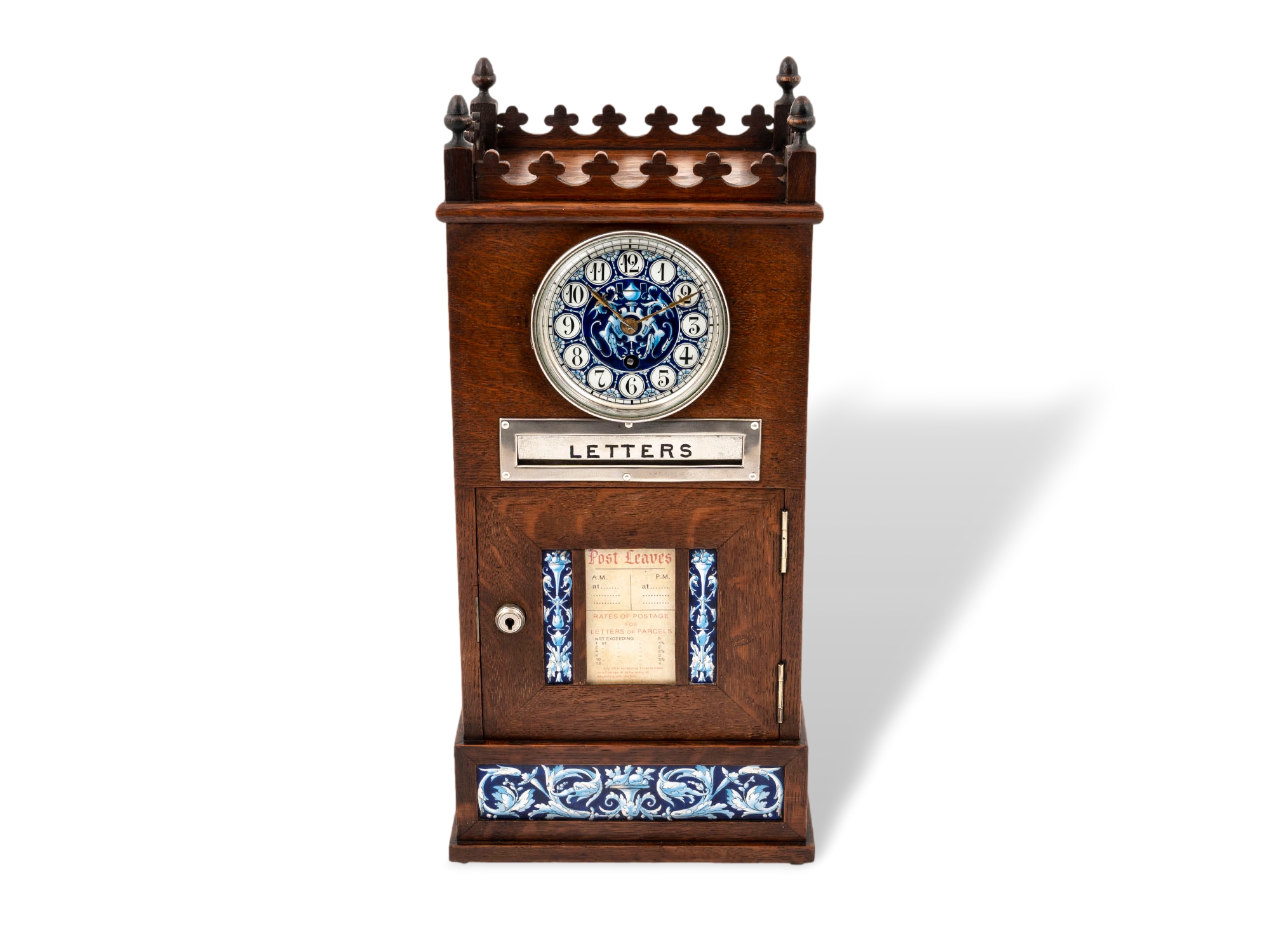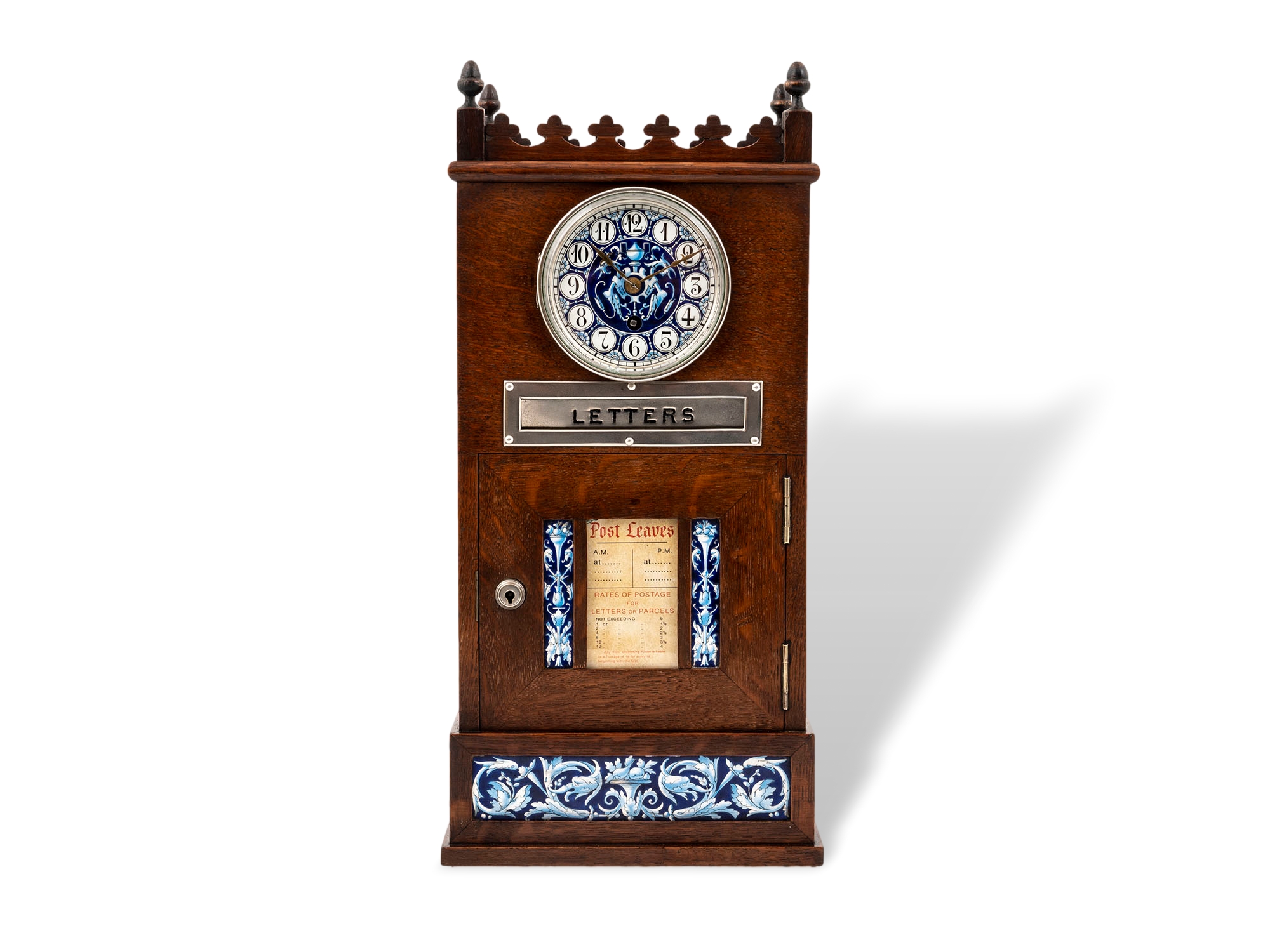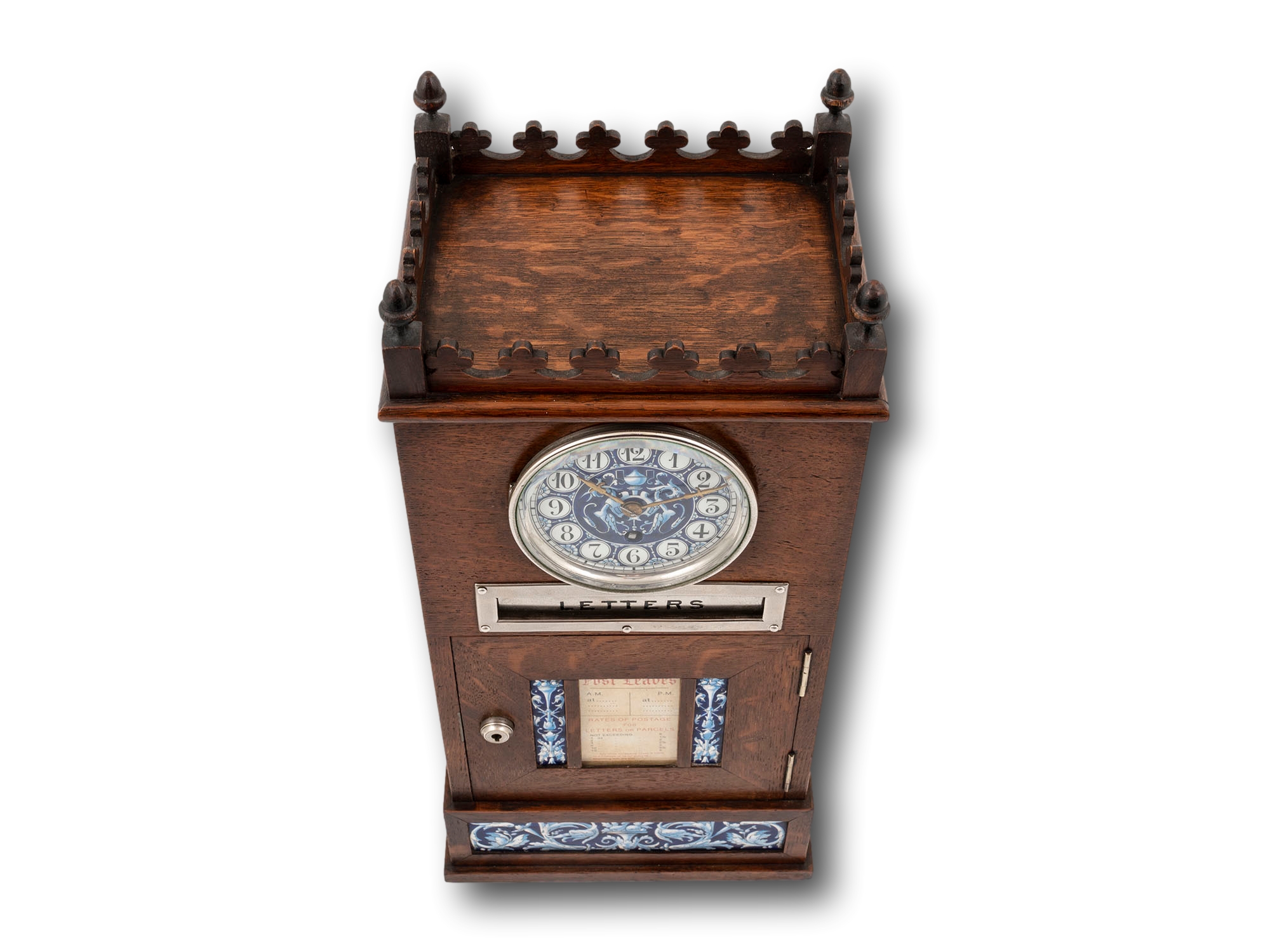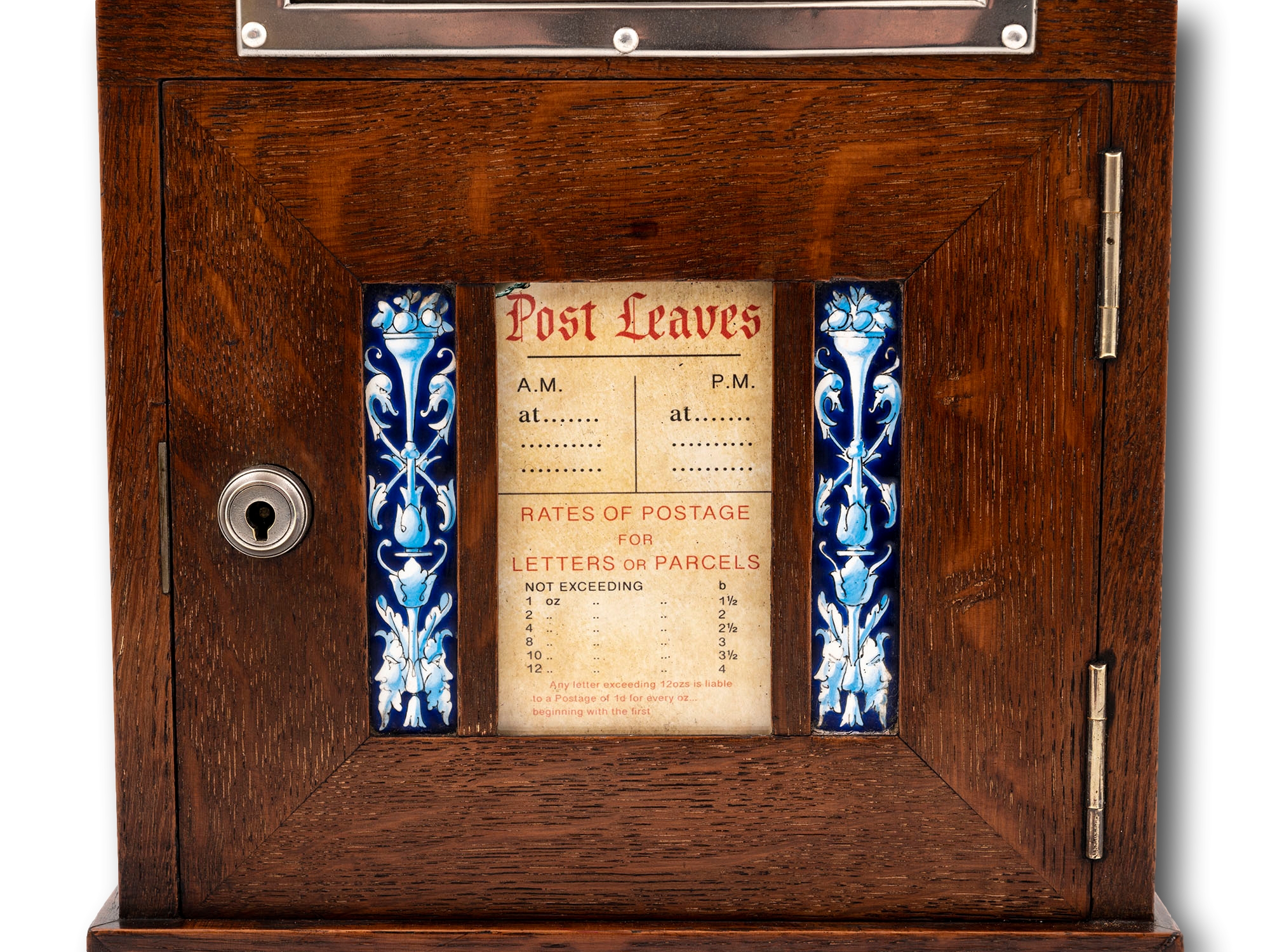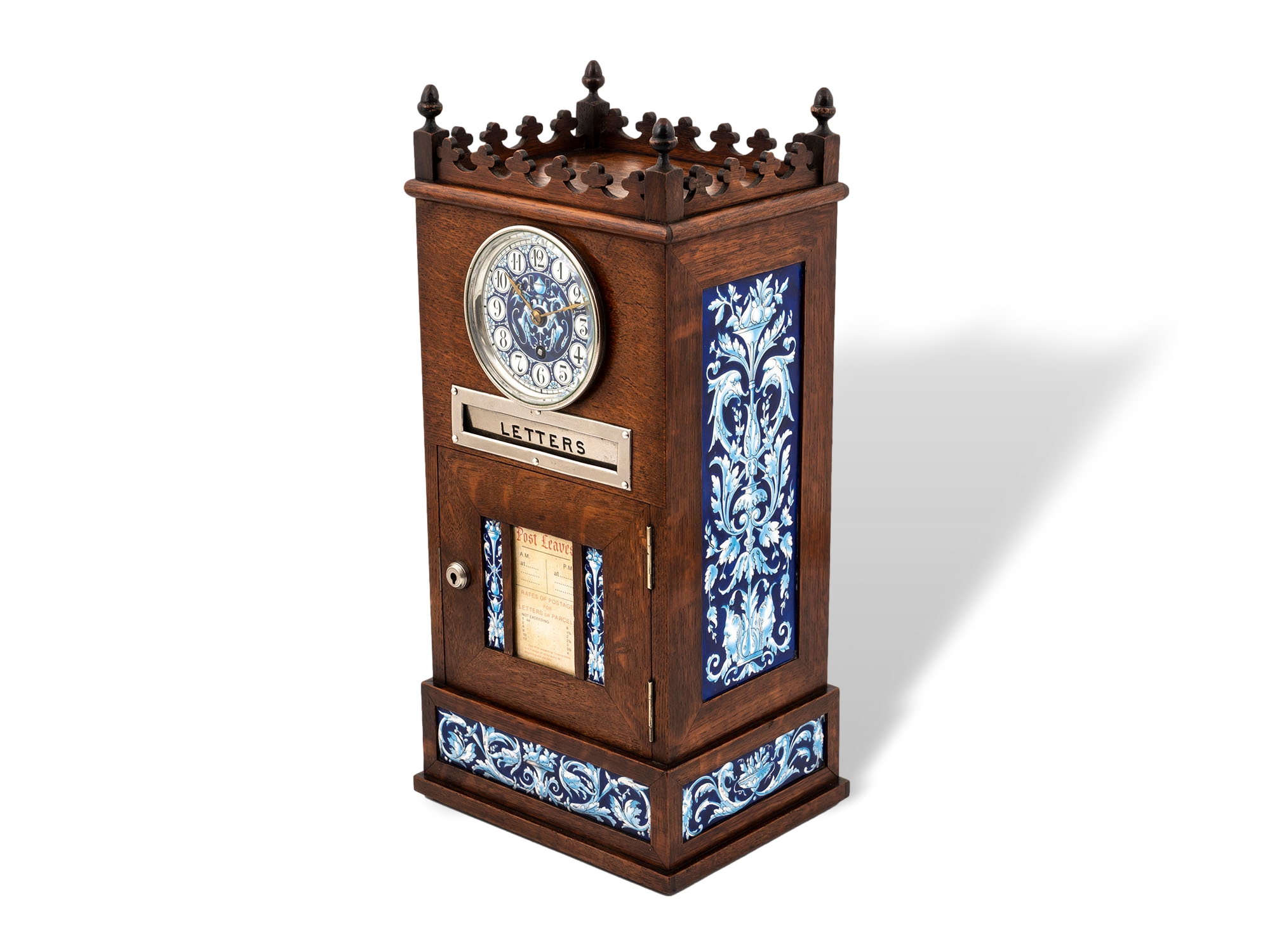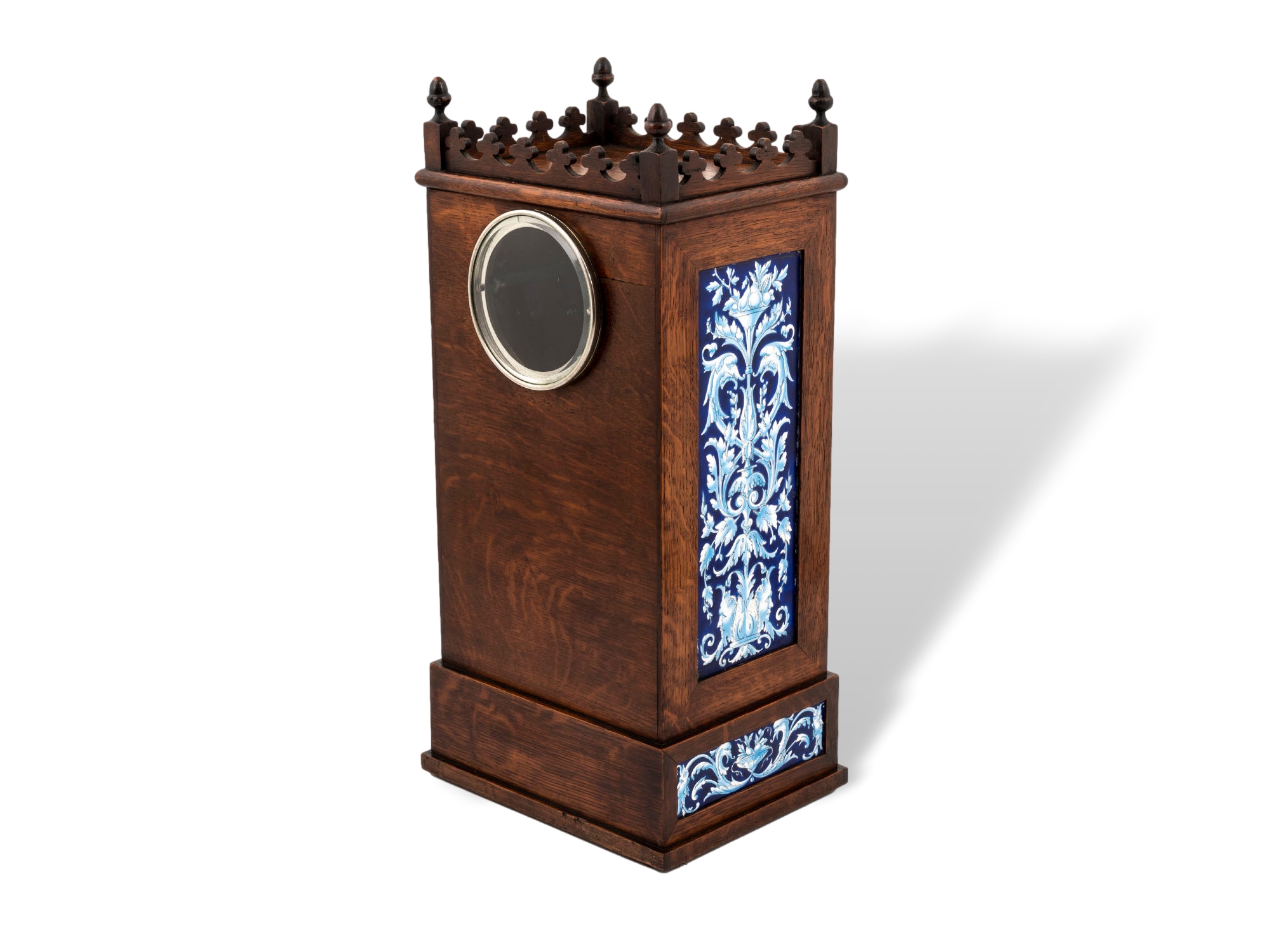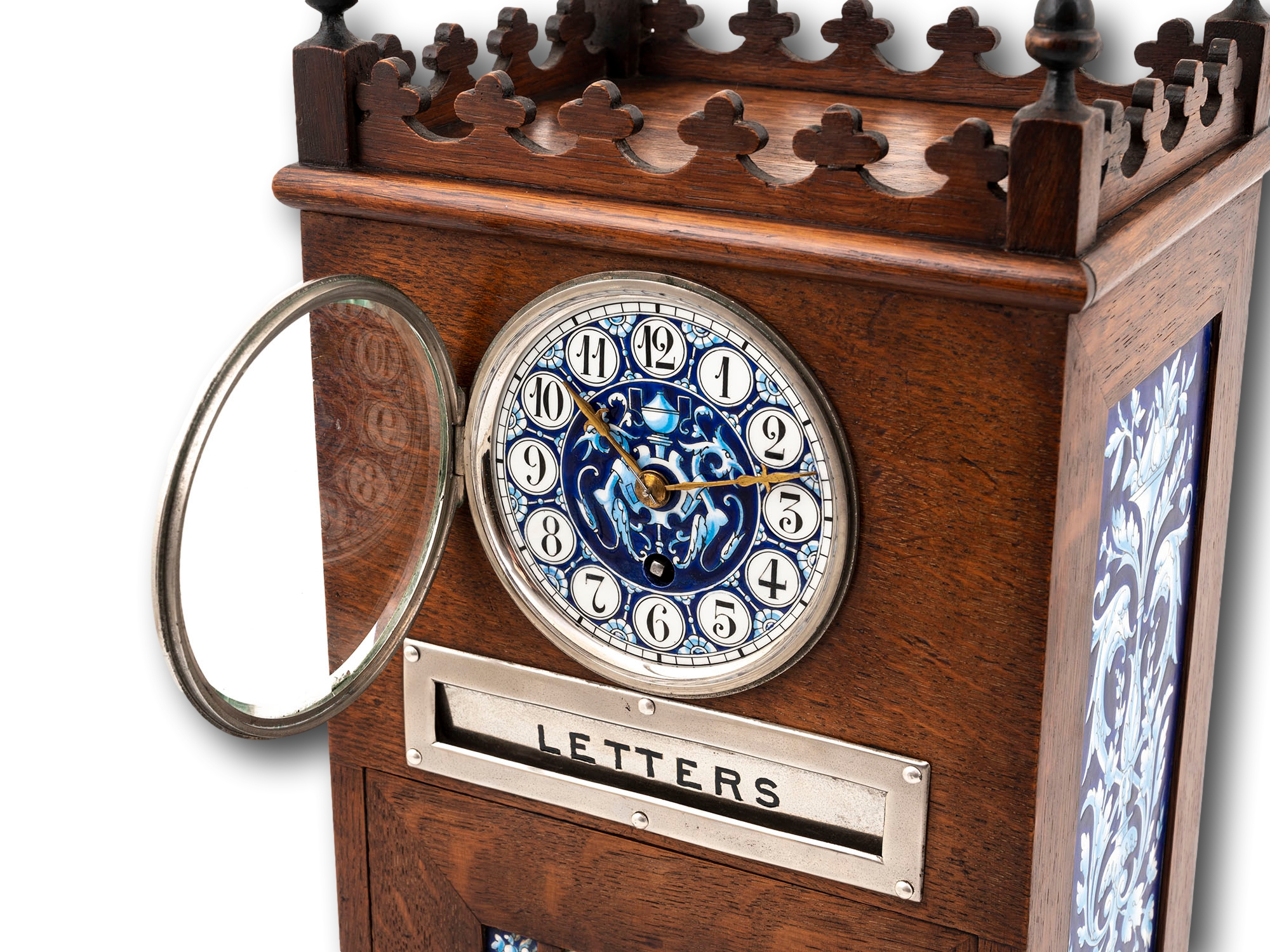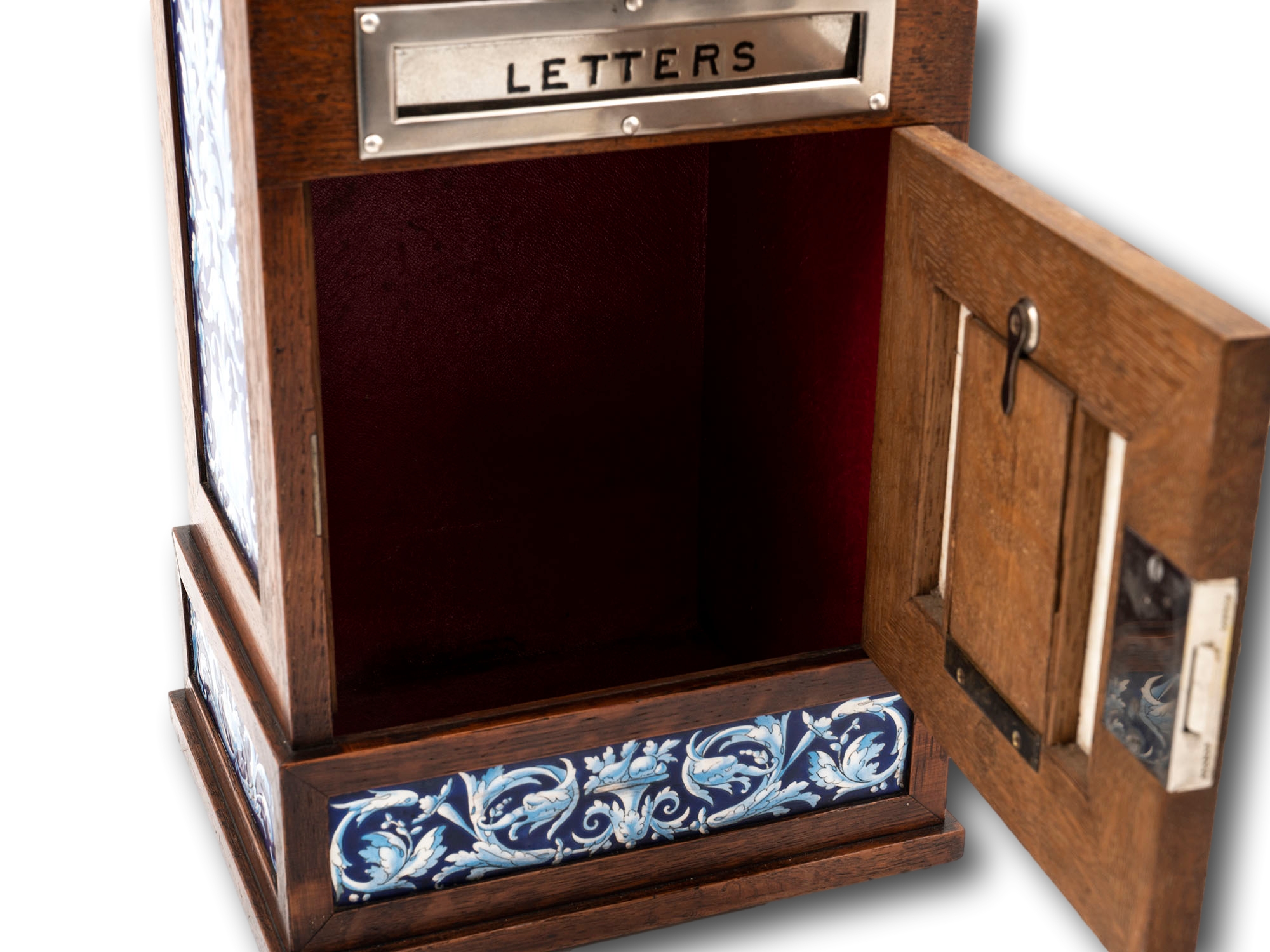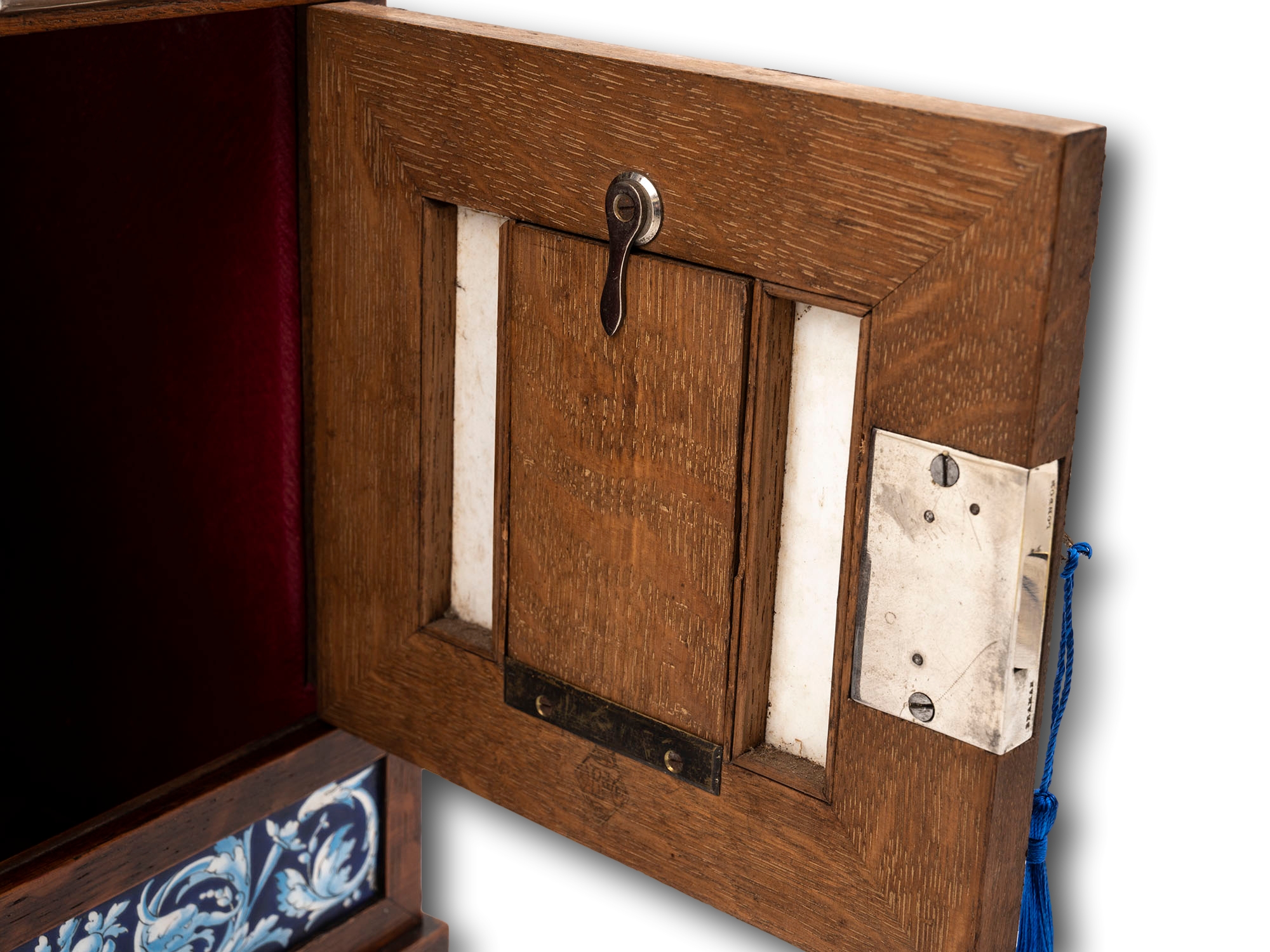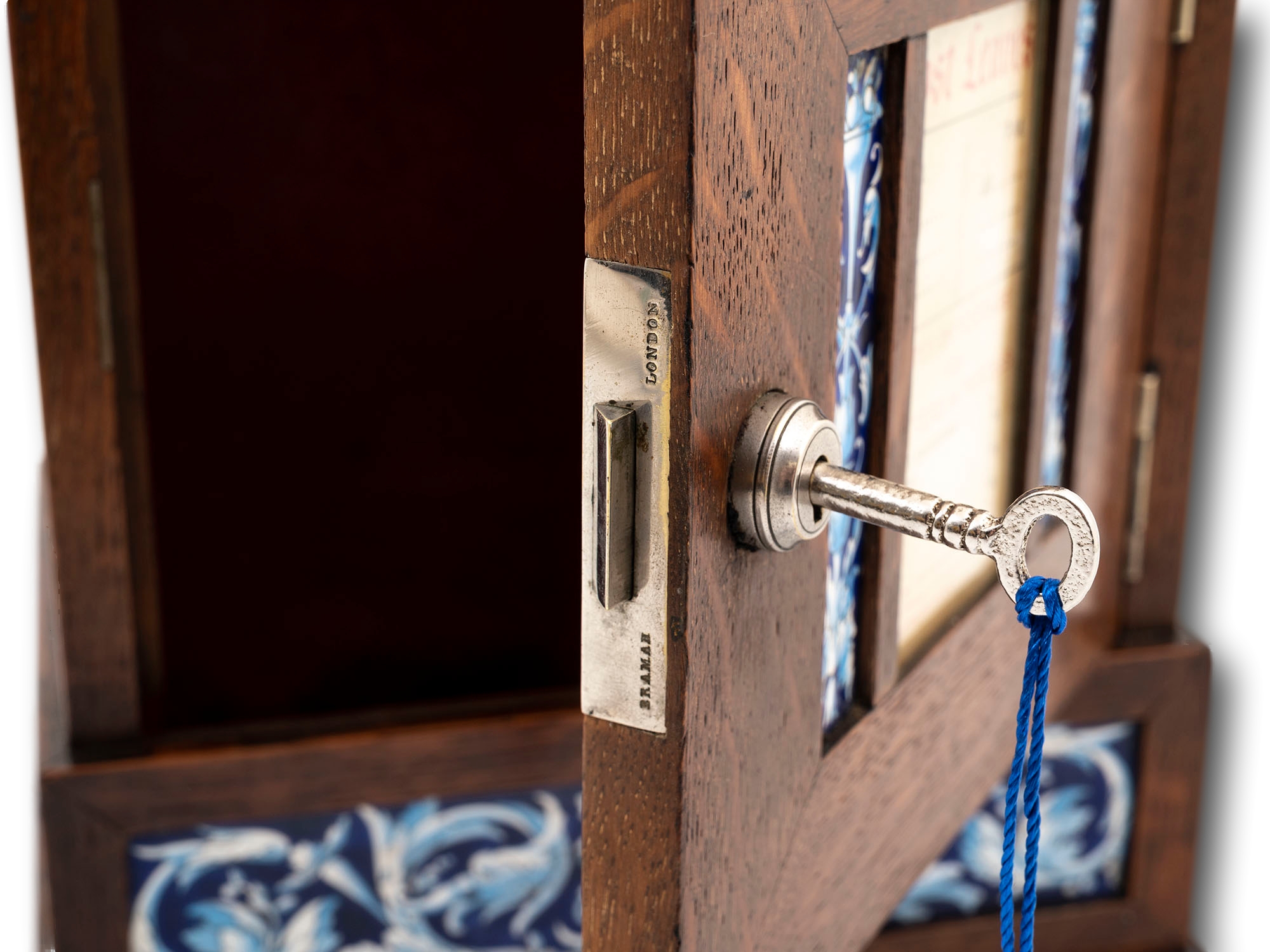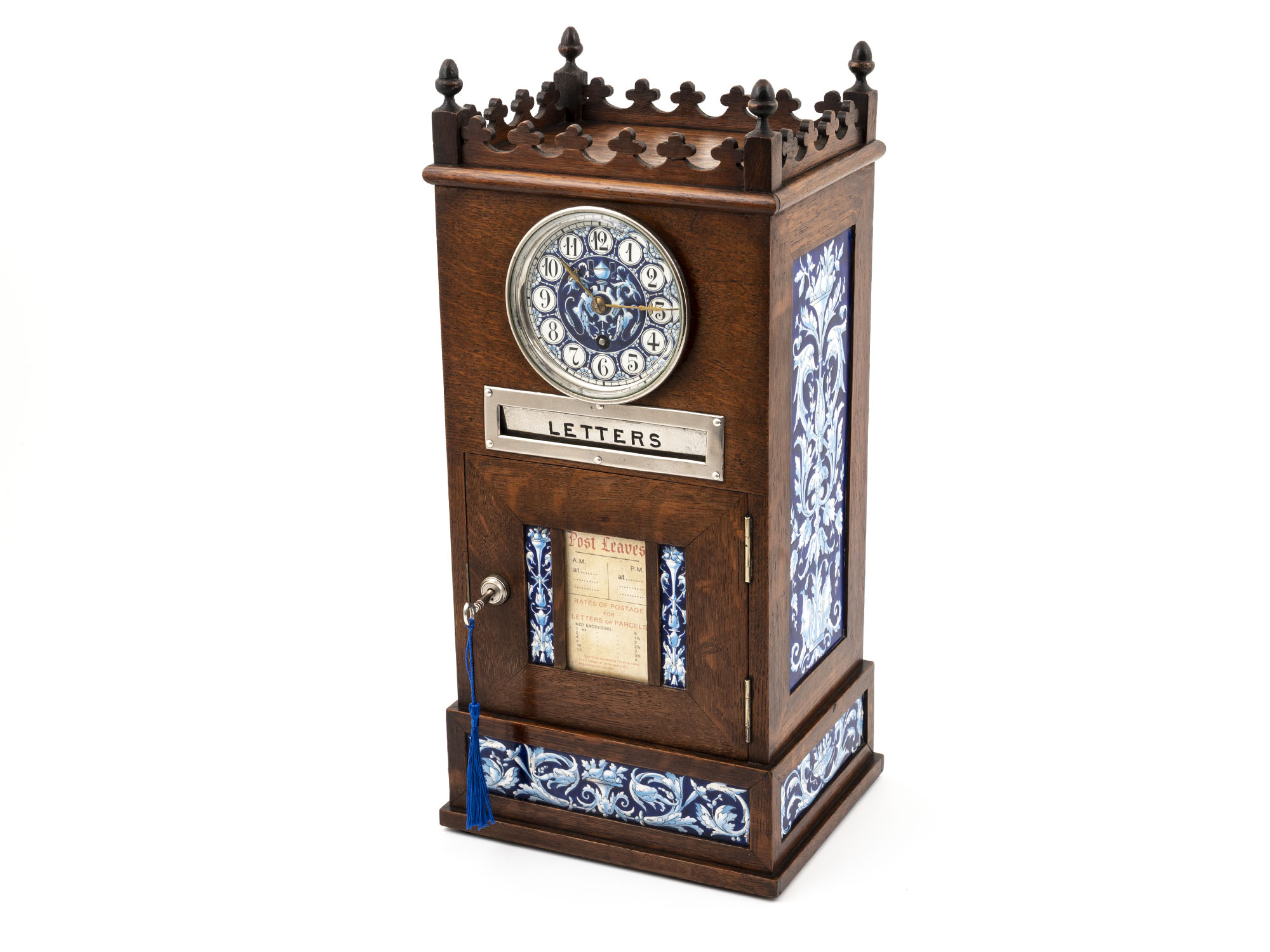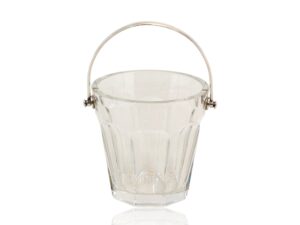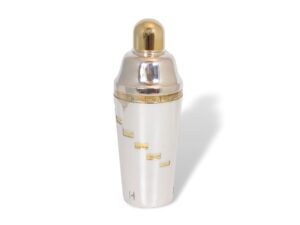Oak Letter Box Clock Lewis Foreman Day
£9,500.00
Aesthetic Movement From our Boxes collection, we are delighted to offer this Oak Letter Box Clock attributed to Lewis Foreman Day. The Letter Box carved in Oak and modelled as a novelty castle turret with four acorn finials and a... Read More
Attributed to Lewis Foreman Day

| Dimensions | 22 × 22 × 46 cm |
|---|---|
| Country | |
| Year | |
| Medium | |
| Period | |
| Literature | |
| SKU | 500945 |
Description
Description
Aesthetic Movement
From our Boxes collection, we are delighted to offer this Oak Letter Box Clock attributed to Lewis Foreman Day. The Letter Box carved in Oak and modelled as a novelty castle turret with four acorn finials and a banding of trefoil decoration to the top. The letter box with a central window containing post leaves, a hinged door to access the letters and an escutcheon containing the locking mechanism. Bordering each side of the post leaves matching elongated aesthetic movement porcelain tiles bring a vibrant decoration with a matching tile to the base. The top third of the letter box features a nickel plated letter box with hinged ‘letters’ flap below a porcelain dial clock with matching aesthetic movement decoration and bevel edged glass front. Each side of the letter box fitted with two larger porcelain tiles and two smaller tiles matching the front decoration. The Letter Box clock is finished with a high quality Bramah lock and lock plate keeping your letters secure. The Letter Box dates to the late of the 19th century during the Aesthetic Movement circa 1880.
The Letter Box comes complete with a working lock and tasselled key.
Measurements (inches) 18.1 High x 8.66 Wide x 8.66 Deep
Literature Mark Goodger 25th Anniversary Catalogue p.51
Ref. for a similarly designed clock by Lewis Foreman Day see Victoria & Albert Museum CIRC.662-1972.
Lewis Foreman Day (1845-1910) was a British decorative artist and industrial designer and an important figure in the Arts and Crafts movement. Born in London, England Day gained a well rounded education in both France and Germany before returning to England to pursue a career in design starting initially designing cartoons on glass at the age of 20. He soon went on to start his own company 1870, expanding his activities beyond glass painting to a wide range of media including wallpapers for W. B. Simpson & Co., textiles for Turnbull & Stockdale, and tiles for Maw’s and Pilkington’s. He was an active member of the Arts and Crafts Exhibition Society, one time master of the Art Workers Guild, which he helped to found and a member of the Council of the Royal Society of Arts (RSA) for much of the period between 1877 and his death. Throughout his career Day found acquaintances and friends in Walter Crane, William Morris and W. A. S. Benson and also found himself on the consultative committee of the Victoria and Albert Museum. A quote from V&A “Day was a teacher and prolific designer within the South Kensington network.”
Oak has many global variations. European Oak, also known as English or French Oak, is found in Europe. It is a well known and very popular wood due to its different types and strength yielding many uses. It can have a very simple clean look or a highly figured finish varying from tree to tree. European Oak can be Golden-yellow to light-brown in colour. Brown Oak is from the United Kingdom and its name is derived from its red-brown colour which is resulted from an attack by “beef-steak” fungus. This usually gives the wood an even colour, however, sometimes the wood can be streaked with a light brown giving it the name Tiger Oak.
Aesthetic Movement (Aestheticism) was an art movement and predecessor to the Arts and Crafts movement in the late 19th century which valued the appearance of literature, music and the arts over their functions. According to Aestheticism, art should be produced to be beautiful, rather than to teach a lesson, create a parallel, or perform another informative purpose, recognised by the slogan “art for art’s sake.” Aestheticism flourished in the 1870s and 1880s, gaining prominence and the support of notable writers such as Walter Pater and Oscar Wilde.
Arts and Crafts (circa 1880 to 1920) movement was an international trend in the decorative and fine arts that developed earliest and most fully in the British Isles and subsequently spread across the British Empire and to the rest of Europe and America. It was developed in response to the decline in standards that was loosely blamed and associated with machinery and factory production. Figureheads linked to the movement include Pugin, John Ruskin, Benson and William Morris. Other leading figure including Charles Rennie Mackintosh, Christopher Dresser were also designing during this time. The Arts and Crafts movement succeeded the similar Aesthetic Movement.
Bramah is London’s oldest security company. Established at 124 Piccadilly, London in 1784, and today based in Fitzrovia, London and Romford, Essex. Bramah manufactures Bramah and Rola locks for domestic and commercial applications in the U.K. and overseas. We are Marylebone and Fitzrovia’s foremost Locksmith and Burglar Alarm installer.
With every purchase from Mark Goodger Antiques, you will receive our latest catalogue, a Certificate of Authenticity, detailed care instructions for your chosen piece and an independent invoice (for insurance purposes) will be enclosed. As well as being protected by a no-hassle, money-back policy, your piece will be entirely insured during the shipping process to ensure the safety of your item.
Additional information
Additional information
| Dimensions | 22 × 22 × 46 cm |
|---|---|
| Country | |
| Year | |
| Medium | |
| Period | |
| Literature | |
| SKU | 500945 |
